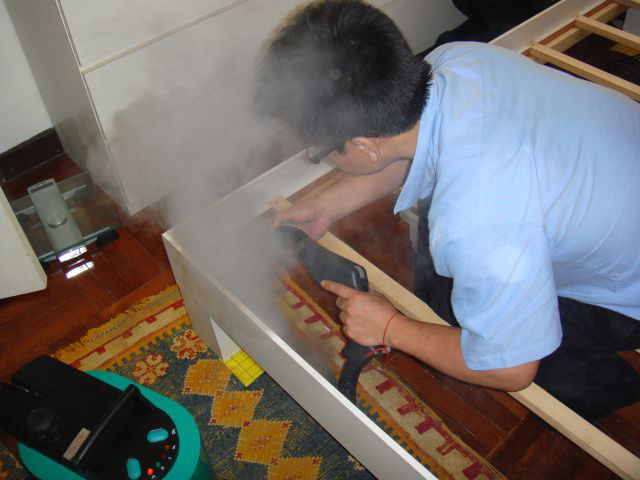
There are two main methods of trapping bed bugs. These are active and passive methods. The former involves catching the bed bugs as they attempt to move from outside the bed into it. This is known as intercepting. Methods that attract the bugs into a trap are called active methods. The instruments used to trap the bugs are called monitors. The professionals use many tools that are not available to the public. There are however things that anybody can do to get rid of bed bugs. Here are some listed by bed bug control specialists.
Passive Bed Bug Monitors
The work is at optimum level if your bed has separate legs. This approach is simple and easy.
Bed Bug Vaseline Trick
This trick is a form of interception. Essentially you coat the legs of your bed with Vaseline or similar petroleum jelly. When the bug attempts to ascend your bed it will get stuck because of the jelly. You are then able to check daily and this will inform you whether you have an infestation or not.
Double-sided tape
If you have a bed with wooden legs make a sleeve out of paper and then use the tape on the paper.
Climb-up Interceptors Passive Bed Bug Monitors
They have two separate chambers that is the inner and outer chambers. The inner chamber traps the bedbugs trying to exit from the bed while the outer chamber traps those bed bugs trying to enter the bed. Using such interceptors is easy as they are readily available. All that you are required to do is check the monitor at dawn and you will likely know whether you have an infestation or not. Such monitors are also easy to carry so you can travel with them.
Active Bed Bug Monitors
These are a little more sophisticated. They rely on the phenomenon that bed bugs are attracted to carbon IV oxide (C02), heat, and specified pheromones. There is in most cases a rough patch that allows the bugs to climb into the trap. The bugs fall into an area referred to as a pitfall that is deep and smooth. The bugs are then unable to climb out. Active monitors are deemed more reliable and accurate when compared to passive monitors.
The Bed Bug C02 Active Monitor
This uses Carbon IV Oxide to lure bed bugs out of hiding. It is said to work relatively quickly. One Carbon IV Oxide charge lasts up to five days and the kit comes with supplies to last 14 days. This ensures that you don’t mess with the gadget every day. This beacon is recommended as an early detection means and as a means of trapping any bedbugs that survive the thorough work of an exterminator.
Night Watch Bed Bug Trap and Monitor
This product operates on a timer. It intermittently emits C02, heat, and a certain scent that attracts the bed bugs. If you run this product for a fortnight and it does not catch any bed bugs then this is 99 % conclusive proof that you do not have an infestation. The product can be accessed on a lease basis from exterminators. If your bed has no legs and you can’t use any of the passive methods discussed above, then this product is good for you. If you are a caretaker or a landlord using this monitor would be ideal for detecting an infestation in its early stages.
It is simple to use because you simply put it on the floor, plug, and insert the lure and the Carbon IV Oxide source, set the timer, and you are set. The monitor is usually checked in the morning.
Conclusion
Bed bug traps cannot be used in isolation. When you have a severe infestation it is recommended to seek the services of a reputable exterminator. Bed bug traps are appropriate for preventive measures to check whether you have an infestation. They are also good to measure the effectiveness of extermination that took place and to guard against any surviving bed bugs. In addition, long-term monitoring is a very good practice, considering the fact it is quite inexpensive and easy to access.